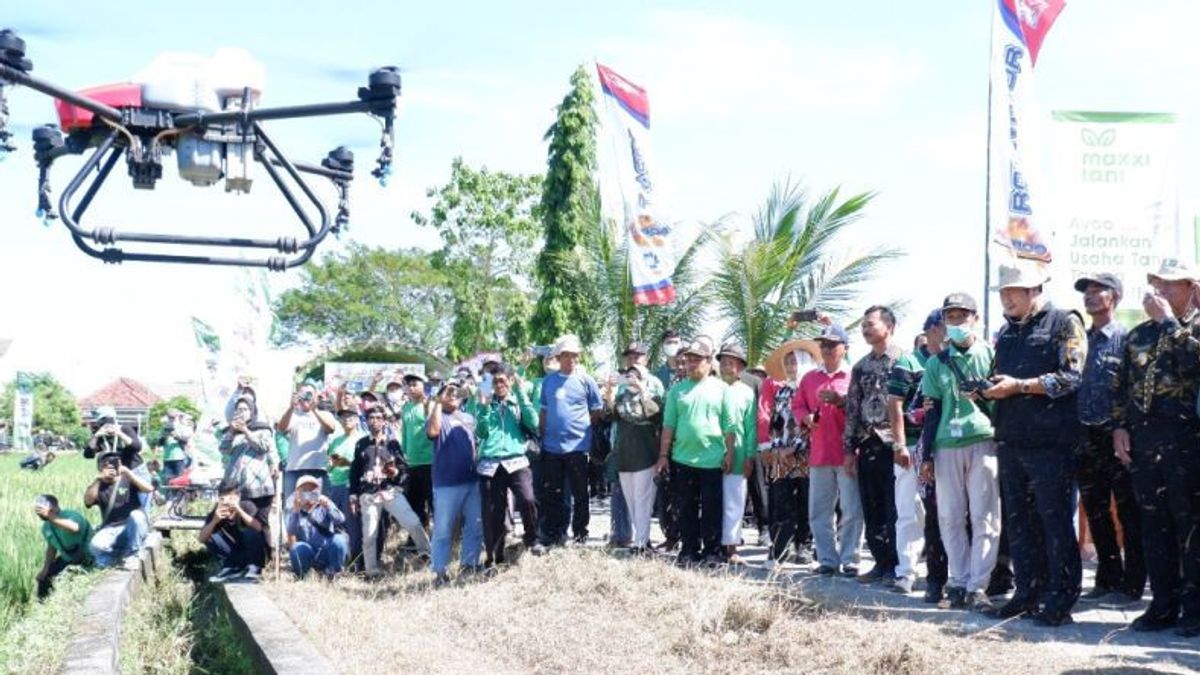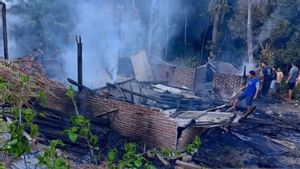JAKARTA – Digital technology has begun to be used by farmers in a number of areas. The government of Lamongan Regency, East Java uses unmanned aircraft or drones to control pests or plant diseases on local agricultural land.
The regent of Lamongan, Yuhronur Efendi in Lamongan, Thursday, June 2, said that the use of drones by spraying biological agents on agricultural land is carried out as an effort to modernize agriculture, so that there is cost and time efficiency.
"I hope that in the future, agricultural modernization must be assisted with modern and sophisticated equipment, as we are doing now. This is an introduction to the community, starting from processing to post-harvest, we will introduce agricultural technology," said Yuhronur, in a press release, quoted by Antara.
Spraying with drones was carried out in Blawirejo Village, Kedungpring District on an area of 10 hectares in a short time, because it used an unmanned aircraft.
"Although currently it has only been introduced in the Kedungpring area, we hope that it will soon develop throughout Lamongan, with assistance to farmers so that Lamongan's productivity as the fifth largest rice contributor in Indonesia can be maintained," he said.
Head of the Lamongan Food and Agriculture Security Service (KPP), Sukriyah, noted that until May 2022, the rice planted area was 116,519 hectares with a harvested area of 68,238 hectares. This means that there are still 48,281 hectares of unharvested plants that must be maintained so that they can be harvested on time.
"Considering that the humidity and temperature in Lamongan Regency are still relatively high, clouds still often occur and it is predicted that there will be several diseases, one of which is this blast pest," he said.
Sukriyah said the use of drones was carried out in the context of mitigation and prevention, as well as handling blast attacks as a commitment to an effective and environmentally friendly joint control movement.
"By using drones, it can save costs where in 1 hectare of land it only takes 10 minutes, and it is more effective and efficient. Hopefully this modern technology will make it easier for farmers," he said.
Meanwhile, blast disease or neck rot is a disease caused by the fungus Pylicularia grisea which can infect all phases of rice plant growth, from the seedling phase to the generative (productive) phase.
If not handled immediately, it will result in a decrease in agricultural and plantation yields which can threaten food security in Indonesia.
The English, Chinese, Japanese, Arabic, and French versions are automatically generated by the AI. So there may still be inaccuracies in translating, please always see Indonesian as our main language. (system supported by DigitalSiber.id)









